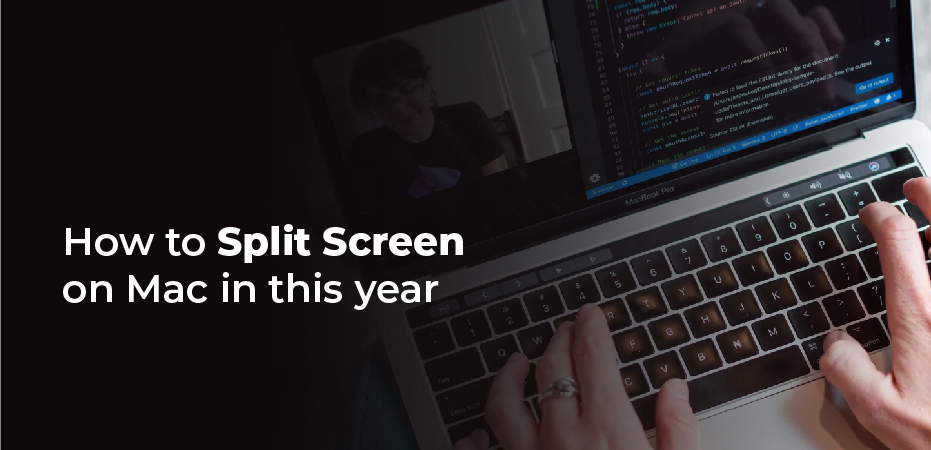Table of Contents
How to split screen on Mac? You can split the screen to see multiple tabs on one screen without everything getting jumbled. Split screens allow you to have several sections, each with its own set of information. Having these sections allows you to work more efficiently and see more information without having to use a second screen.
There’s a very easy split-screen mode called Split View available in newer versions of macOS. You will learn how to use Split View on a Mac in this guide.
In addition to connecting multiple external monitors for larger projects, here’s how to divide your screen on a smaller level whenever you need it.
How to Split Screen on Mac
Get started with Split View
Start by opening two or more windows that you want paired in a split-screen layout: browser windows, apps, documents – whatever you want. If you look in the upper-left corner of your first window, you will see three colored dots: red, yellow, and green. These control the window.
When you hover your cursor over the Green Dot, you will see two small “expand” arrows. Once you hold down this Green Dot, you will see a list of options: Enter Full Screen, Tile Window to Left of Screen, and Tile Window to Right of Screen. Choose either the second or third option, and the window will fill that portion of your screen.
One half of your Split View is done. On one half of the screen, you will see the first app, with thumbnails of any other open windows on the other. Choose the other window that you want to use in Split View mode, and it will expand to fill the void, completing the Split View experience. You can tap either window to switch your primary focus as necessary.
Adjusting Split View
Split View doesn’t have to divide your screen equally. Hold down the Black Divider and drag it left or right to adjust each half of the screen. If you’re trying to view a large webpage with an odd design or need more space for a spreadsheet, this option will be especially helpful. Apple’s Photos, for example, has minimum widths, so you may not be able to adjust the bar much or at all.
If you prefer windows on different sides, simply click and hold the title bar of an app and drag it over to the opposite side. The windows will automatically switch places.
Not sure where your menus have disappeared? Split View automatically hides your menu bar (and dock). If you move your pointer to the top of the screen, you’ll see it reappearing while your pointer remains, giving you access to each app’s menu while you’re using Split View.
Finally, if the windows are too small, you can adjust the resolution.
You can exit Split View mode by clicking on the Green Dot or pressing Esc. Both windows will be returned to their original state and you will be able to resume what you were doing before entering Split View.
Split View options
By holding Option (or Alt) and clicking the Green Button in a window’s top-left corner, you get three new options: Zoom, Move Window to Left Side of Screen, and Move Window to Right Side of Screen.
Zoom keeps the dock and menu bar visible while Enter Full Screen hides them. The difference between tiling and moving a window is that tiling hides the Dock and menu bar, while moving does not. Moving also doesn’t enter Split View — there’s no moveable black bar when you just drag a window to either side of the screen. You don’t have to pair a second app either.
Window snapping
After waiting many long years, MacOS now features native window snapping, just like Windows 10. Click and drag a window to one of the four sides or four corners of the display, and a translucent box will appear in front of it. This indicates the shape the window will take. Release the mouse button, and the window will snap to this position.
Catalina (and newer) gives you the following options:
- If you drag a window into a corner, it will take up 25% of your screen.
- If you drag it to the top of either the left or right side of the screen, it will fill the top half of the display. By doing the same for the bottom portion of the left or right side, it will fill the bottom half of your screen.
- Drag the window to the left or right of the screen without going near the corner, and it will fill the left or right half of your display.
- Drag the middle third of the screen to the bottom.
- To make the app full screen, drag it to the top of the screen. Note that if you drag a little farther up, you’ll enter Mission Control, so be careful.
It may take a bit of practice to find the various sweet spots since there are so many options. Mac users have been deprived of this helpful feature for far too long, so adding it to macOS is a welcome addition.
Window snapping is not the same as Split View – apps will not enter full screen when you drag them into place and there’s no black bar to adjust their size.

